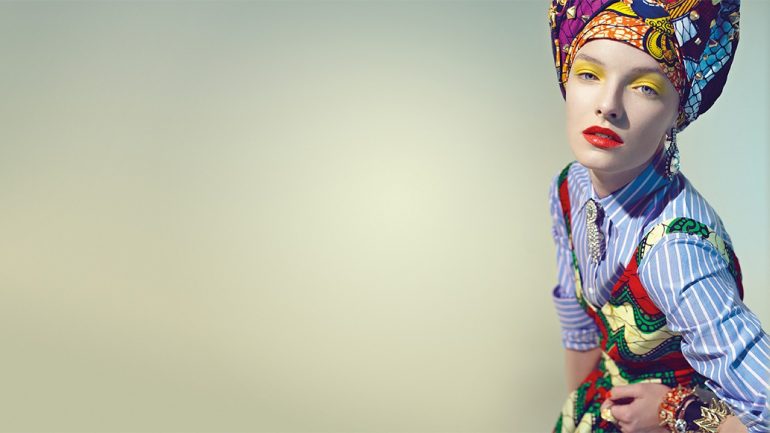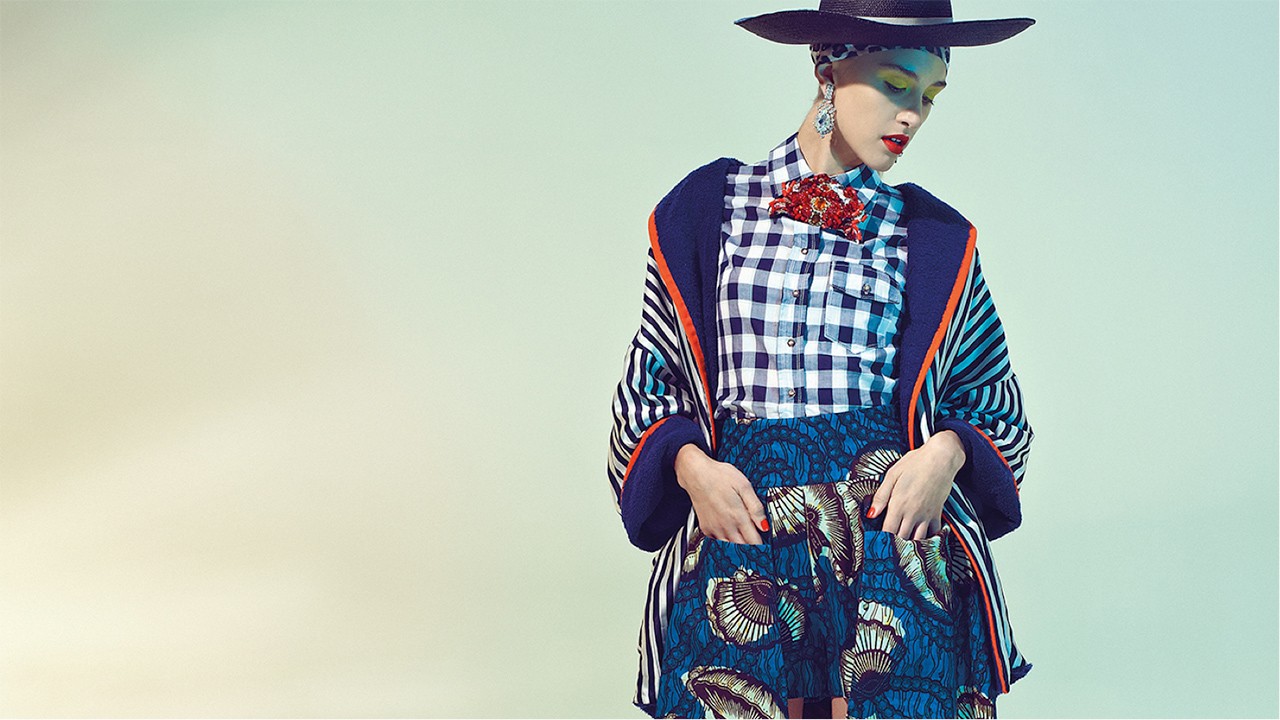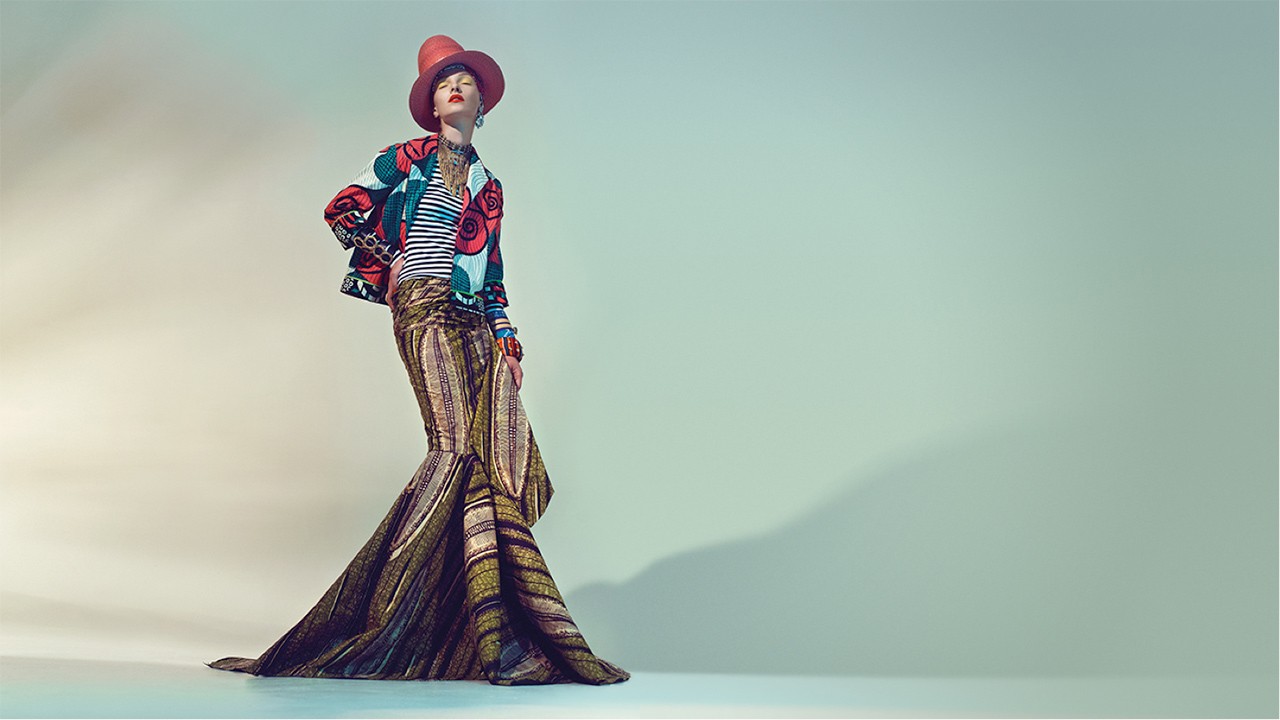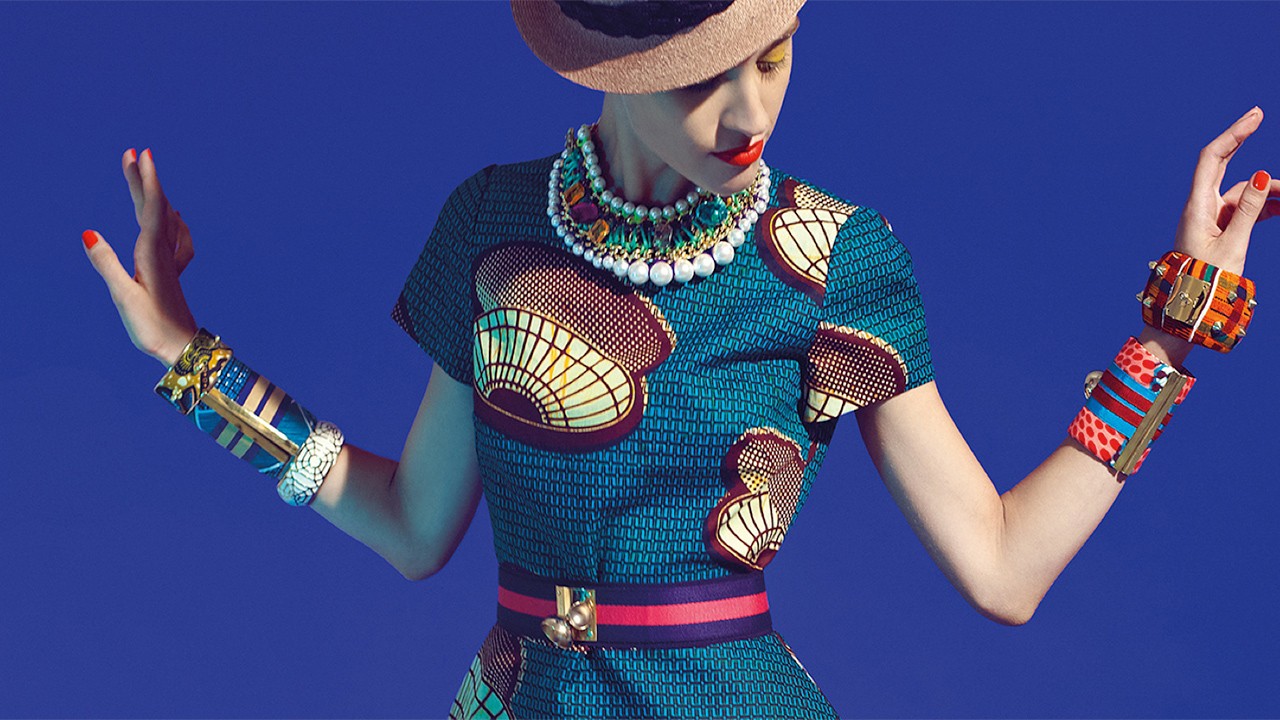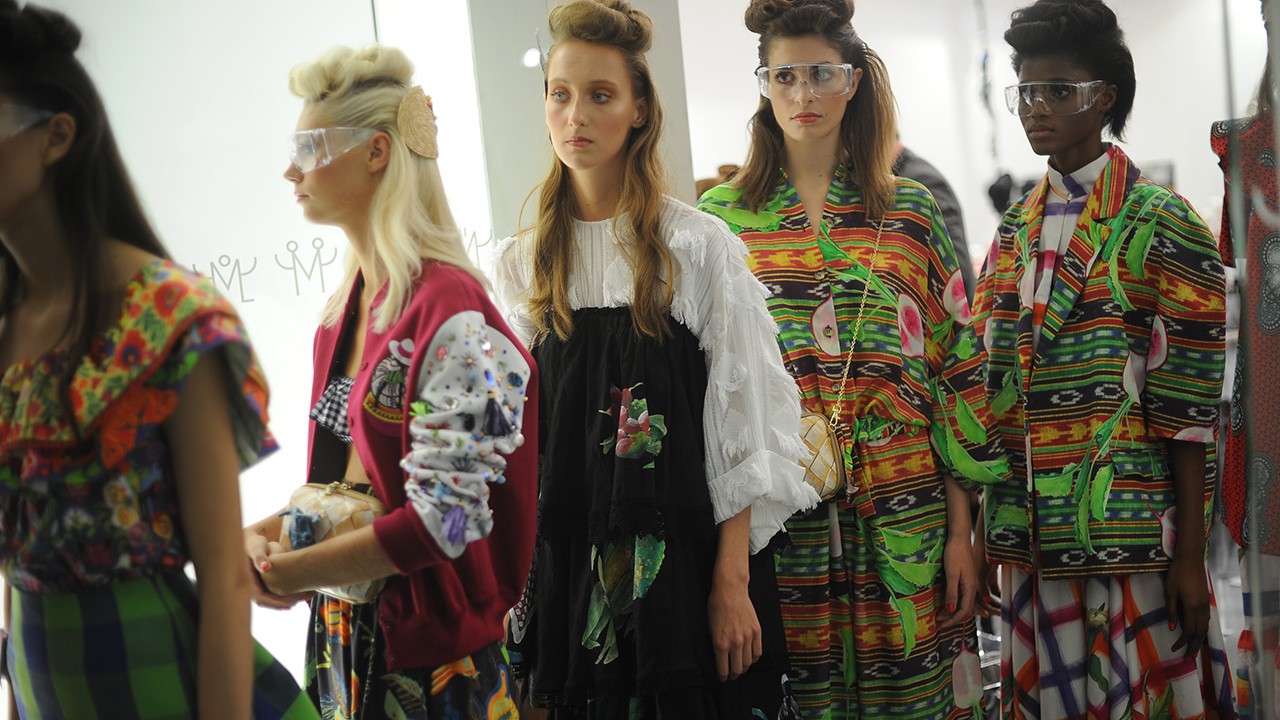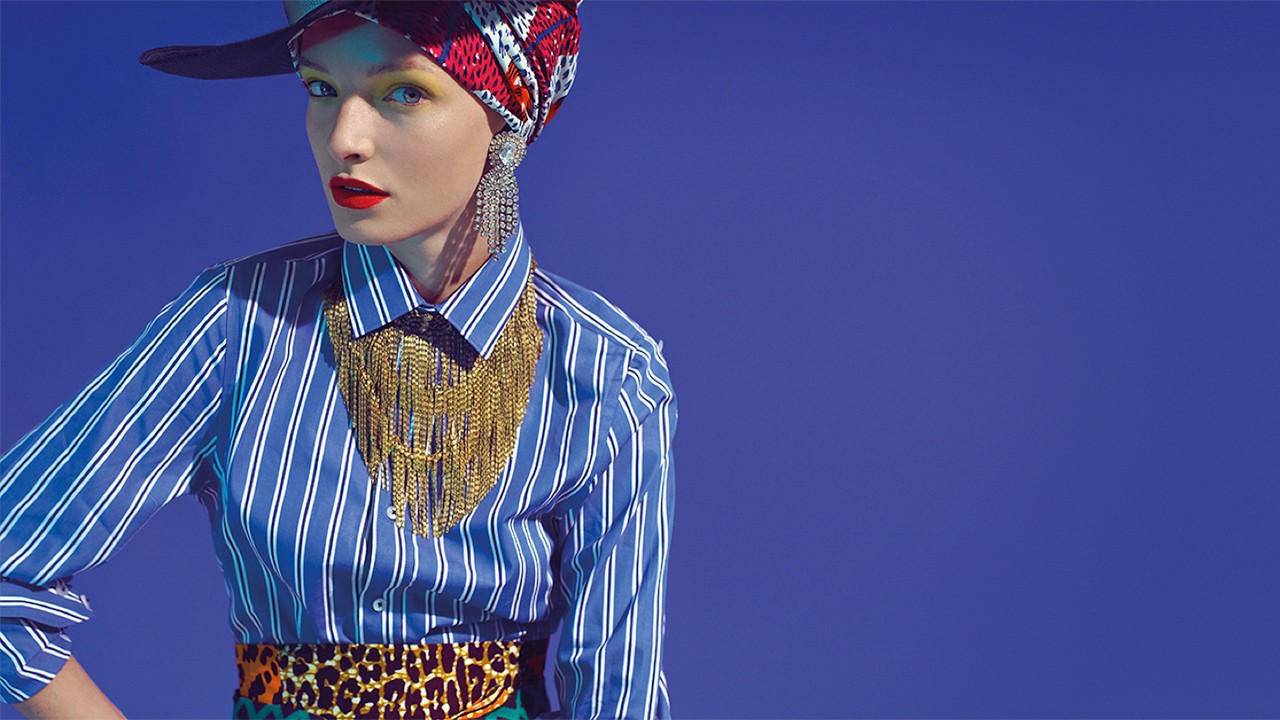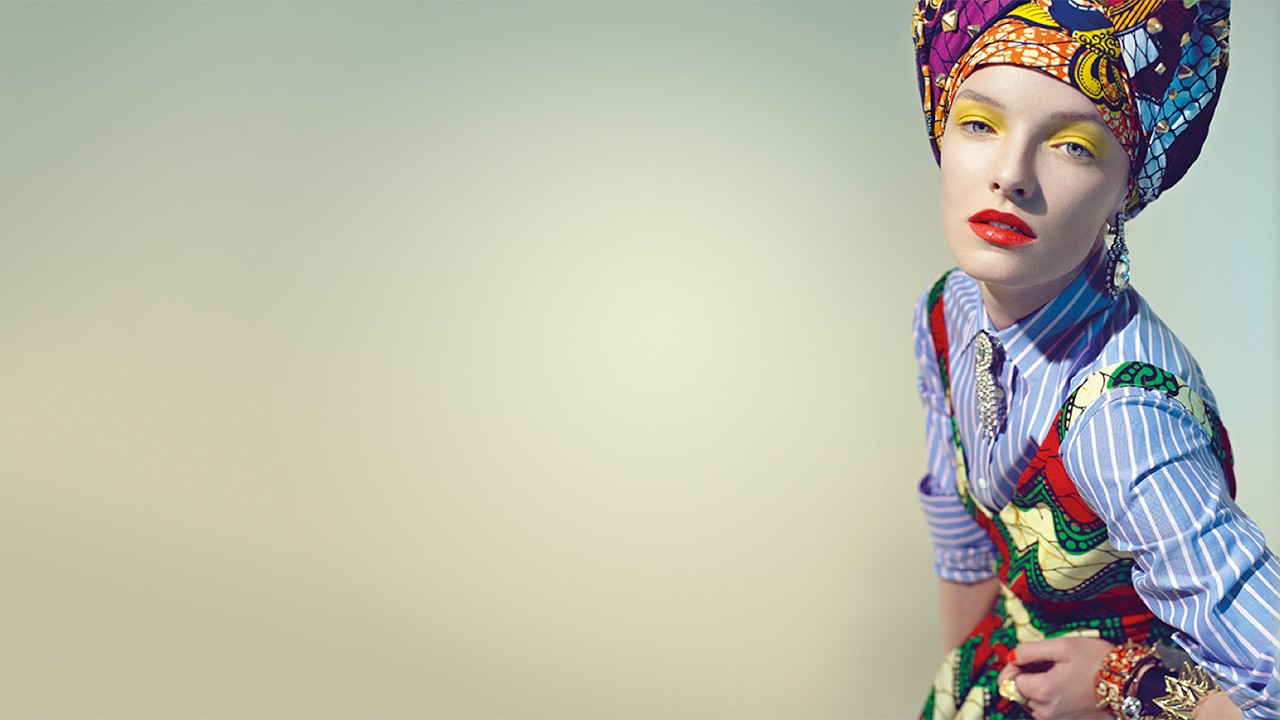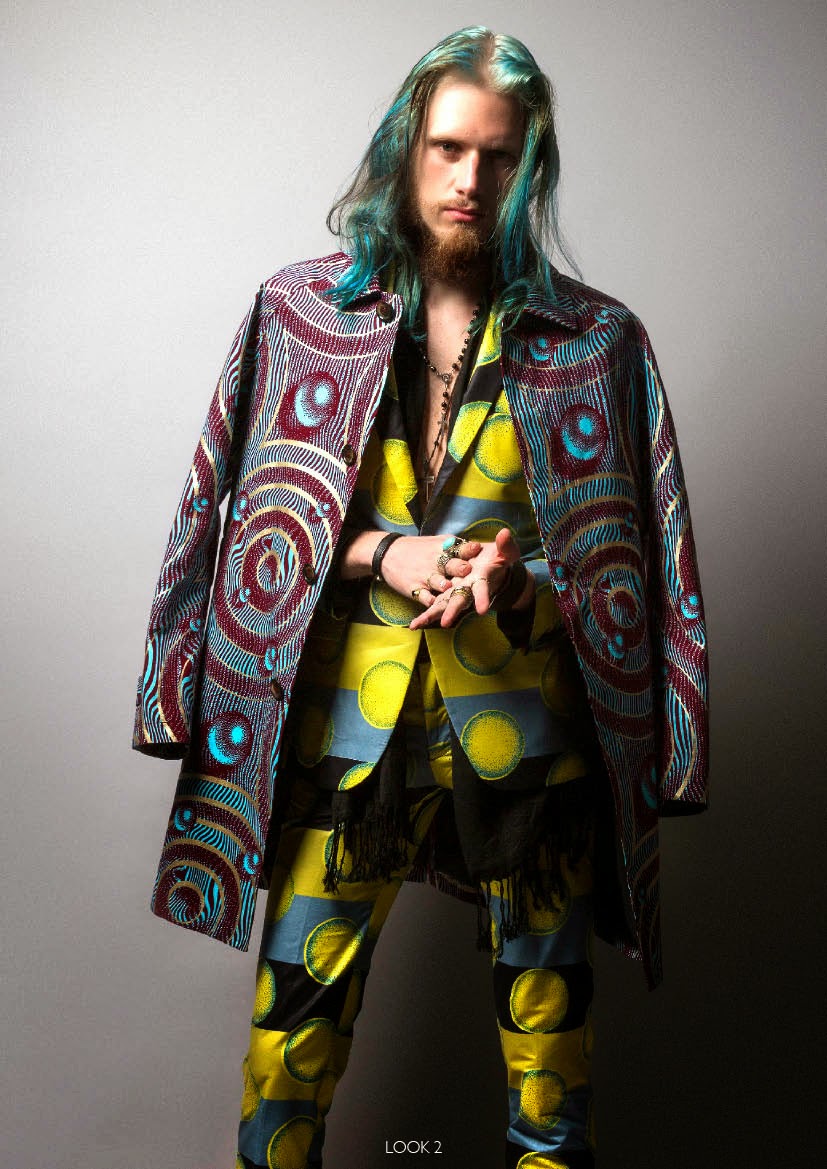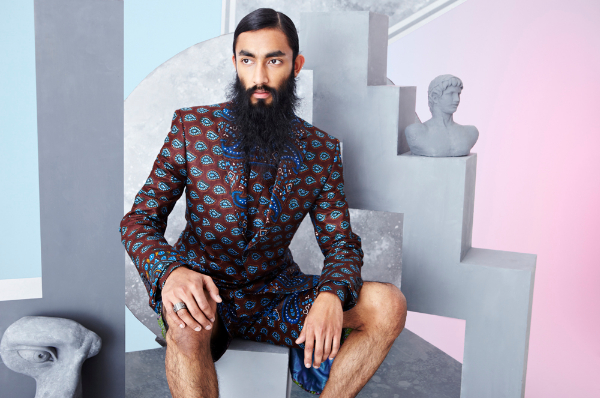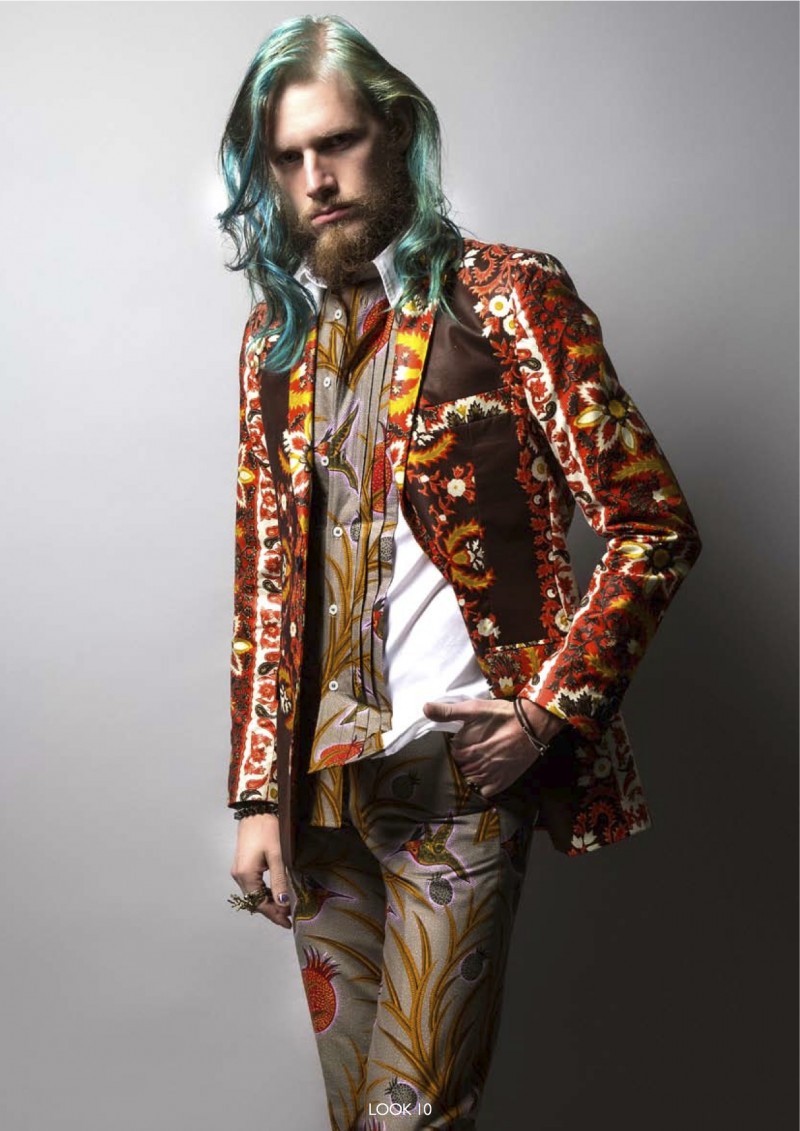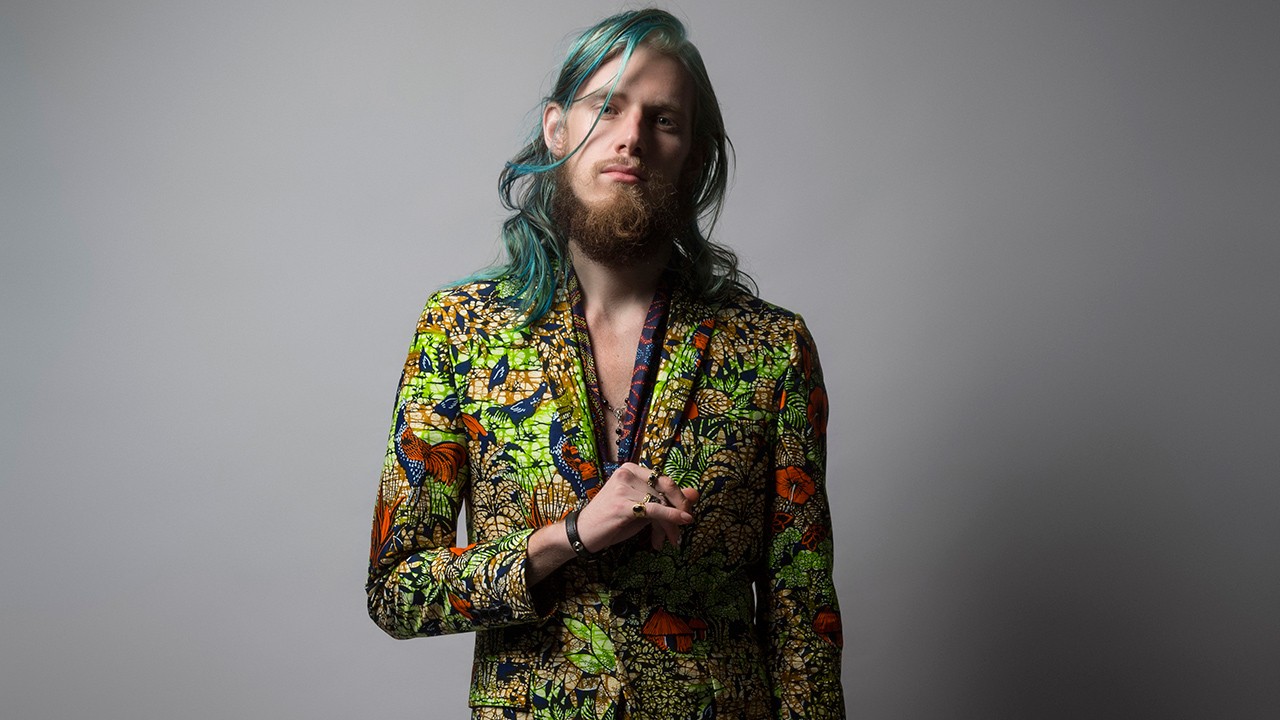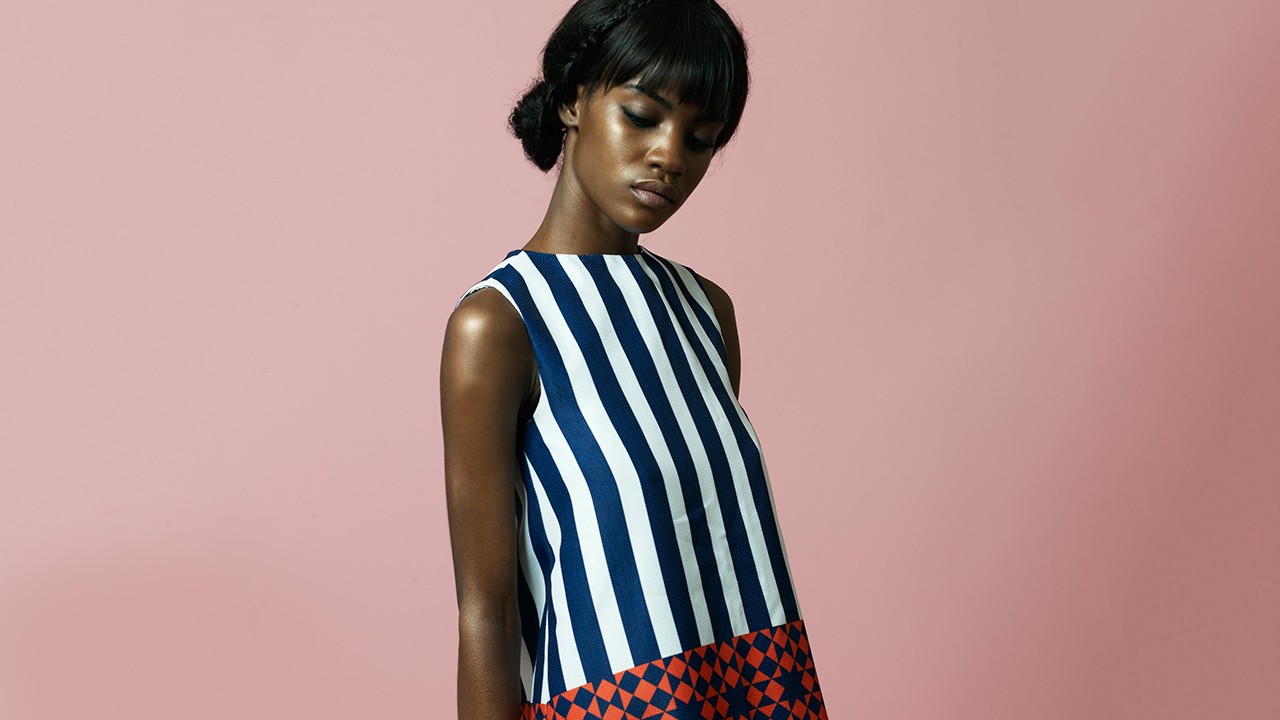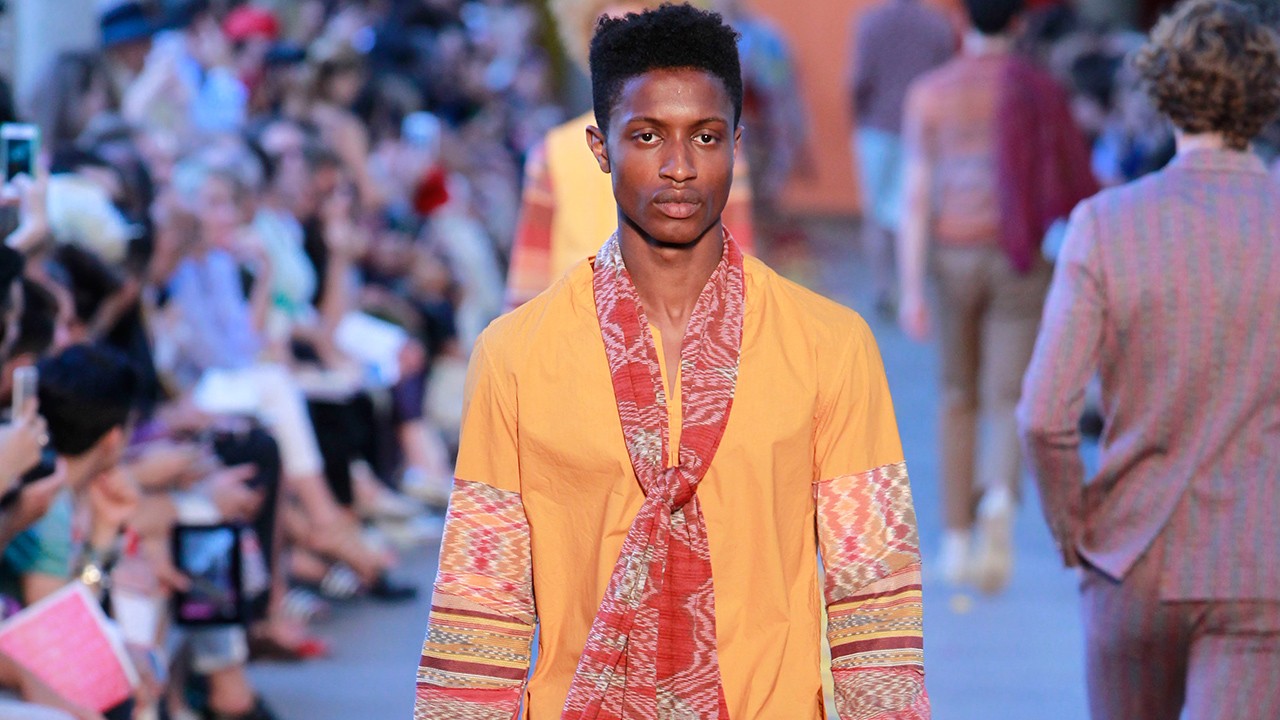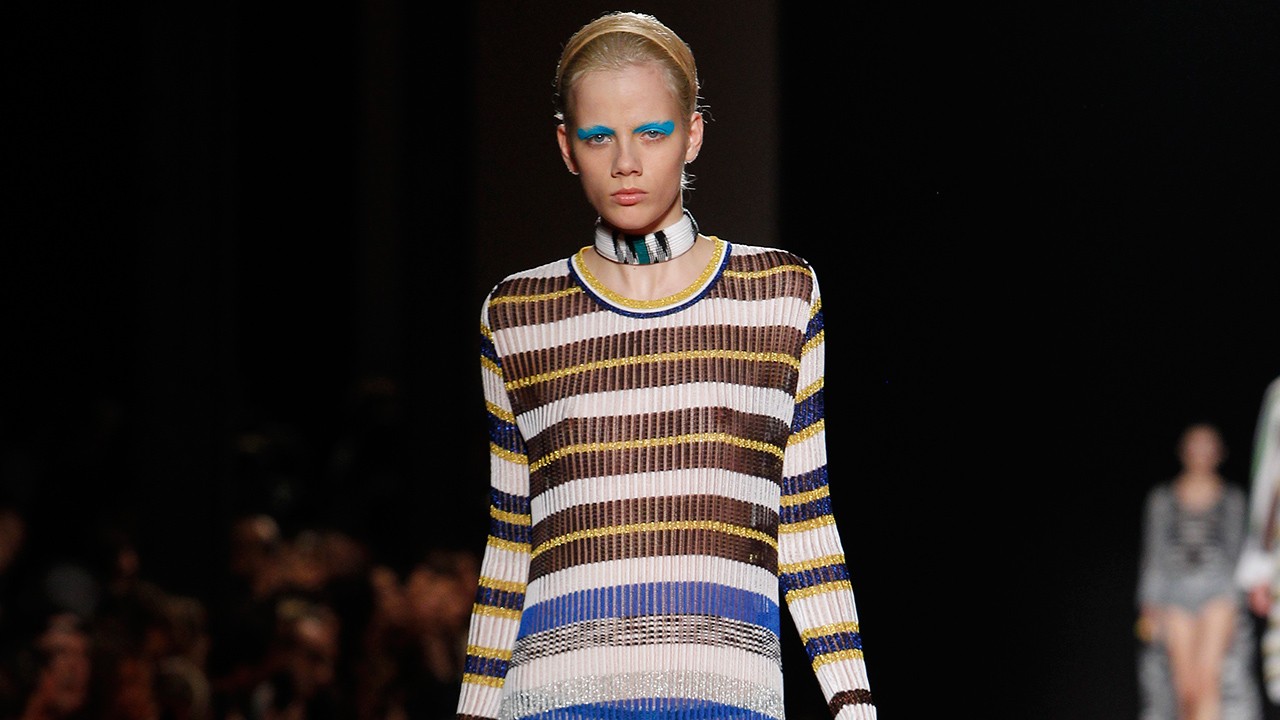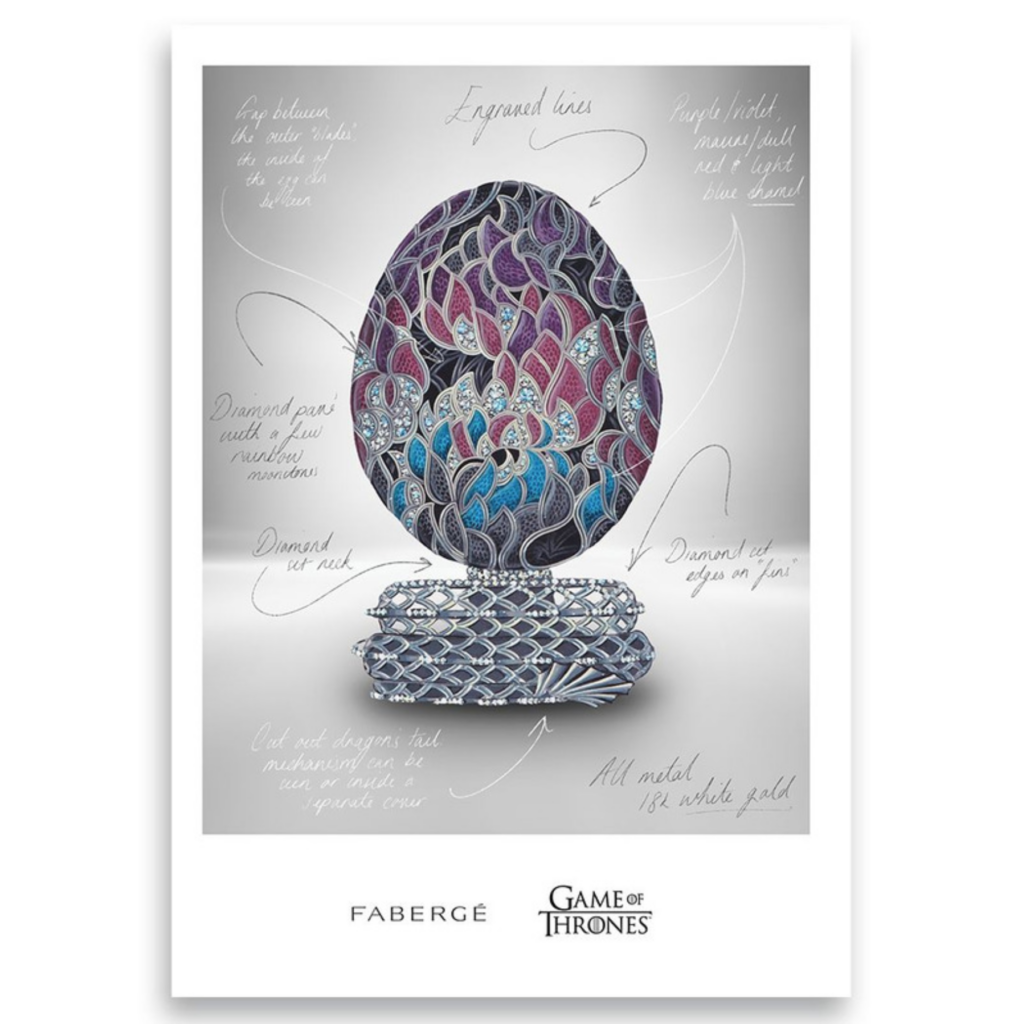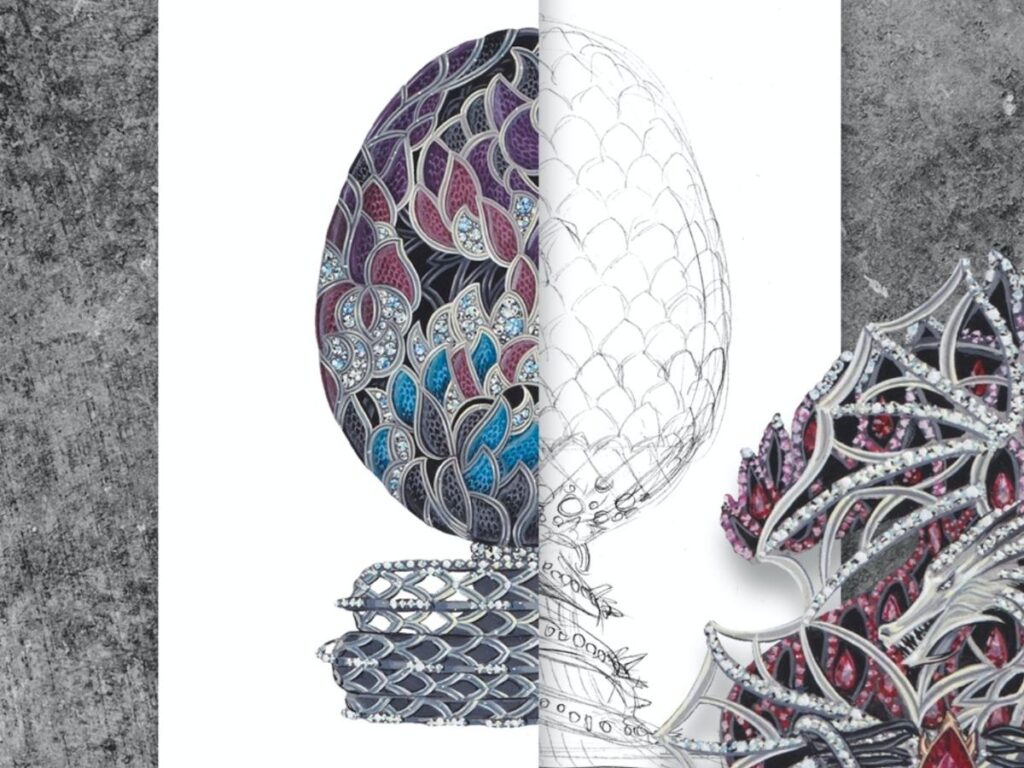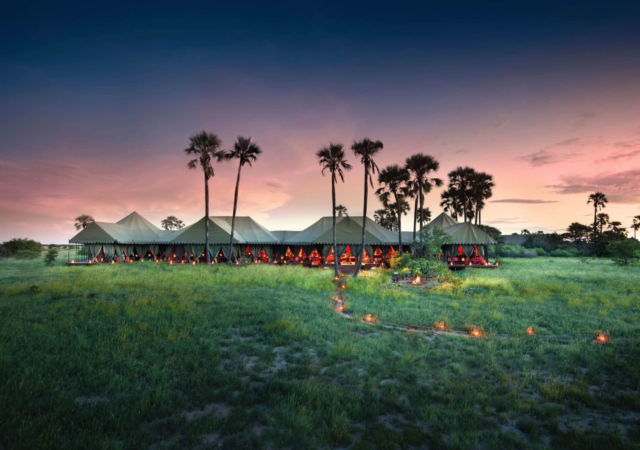MILAN’S NEW INTERNATIONAL FASHION TREND IS FORGING STRIKING LOOKS FROM THREE CONTINENTS FULL OF FLAIR, COLOUR AND CULTURE. MEET THE DESIGNERS AT THE VANGUARD OF ITALO-AFRO-ASIAN STYLE AND FIND OUT WHY IT’S GOING TO BE BIG IN 2016…
INTRODUCING ITALO-AFRO-ASIAN STYLE
Modern Milan is a hive for diverse international fashion – and one of the latest blossoming trends draws heavy inspiration from Africa and Asia. But this isn’t just about appropriation; instead it’s a collaboration, bringing a new king of dialogue to the contemporary style scene. Designers from the Ivory Coast and South Africa are making the journey to Europe to showcase their work, while some of the most innovative names in Italian fashion are infusing their collections with the bold graphics of central Africa, India and beyond.
STELLA JEAN – THE TRAILBLAZER
One of these names is Italian-Haitian Stella Jean. The Milan-based designer has done more than any of her contemporaries to bring afro-Asian motifs to the Italian catwalk. In particular, she has been key to introducing bold, intricate batik-style wax print fabrics – originally an Indonesian dyeing technique but instantly recognisable in West African traditional dress – into 21st century Europe and directional design. Stella Jean’s work is a fusion of aspects of her family heritage: “The starting point was my father’s shirts, which symbolised my European roots,” she says. “I mix that with wax design motif textiles, which represent the African roots of my mother’s native land, Haiti – the first independent black republic in the world.”
The designer also recognises that a lot of what we think of as being inherently African in style has origins elsewhere. The story is as complex and layered as a couture dress: ‘The “African” fabrics I grew up with aren’t really “African”’, she explains. ‘Dutch wax print fabrics started out as imitations of Indonesian batik, locally produced in Java. The Dutch played a major role in industrialising batik production, and popularised it for the foreign market – the fabric found its way into West Africa and found an enthusiastic market on the Gold Coast. From there they spread into other West and Central African markets.’
Duly, Stella Jean’s spring/summer 2016 collection has an itinerant approach to design inspiration – starting with an elegance that is rooted in Italy. ‘There are 33 styling mosaics in the collection,’ she says. ‘Italy is the port of departure, represented by its sharp, sartorial qualities. The journey continues along the lines of the historic Italian exodus – to the axis where the Atlantic joins the Pacific, the Andes, even London to symbolise current emigration.’
The result is truly global design – something which Stella Jean believes can help transcend boundaries beyond the catwalk. ‘Fashion is a cultural translator,’ she explains. ‘If we can mix elements that come from distant and different cultures, and the aesthetic result is good, we can embrace that juxtaposition of cultures in real life.’
TO VIEW GALLERY CLICK ON IMAGES
SIMONE CIPRIANI – THE ADVOCATE
2016 kicked off with the second installment of Constellation Africa at Pitti Uomo in Florence. This event acts as a showcase for some of the most inventive contemporary menswear from, or with roots in, the African continent. It is staged by the Ethical Fashion Initiative (EFI), a joint agency of the United Nations and the World Trade Organisation that connects top international designers with unsung local talent in East and West Africa, in an effort to build their profiles and forge a way out of poverty.
Tuscany native Simone Capriani created and manages the EFI, which has worked with designers Vivienne Westwood, Ilaria Venturini Fendi and even Italian supermarket COOP. He believes Italy and Africa are well placed for a creative alliance in fashion. ‘I think Africa’s continued presence through its art at the Venice Biennale has influenced Italy’s creative interaction with the continent,’ he says. ‘The diverse cultures of the continent have a real strength in their use and understanding of colour, and this resonates strongly with Italian fashion, which does not shy away from bold design.’
DENT de MAN was one of four key brands exhibited at this year’s Constellation Africa. Named after a mountain on the Ivory Coast, the label has become known for menswear using the batik archive of Dutch print manufacturer VLISCO. Its studio is now in East London, but Dent de Man’s five designers hail from different parts of the globe, while its lines are found in stores from Milan to Tokyo. In this way, it was a perfect fit for the showcase event – African in feel, yet undeniably international.
‘The Constellation Africa show demonstrated that Africa has its space on the global fashion scene,’ Cipriani explains. ‘For a long time, fashion has sourced inspiration from Africa – we believe Africa is the land of innovation.’ Indeed, he suggests that this stimulus is particularly acute for Italy: ‘Through current migration patterns, Africa is ever present in the streets of Italy.’
SINDISO KHUMALO – THE RISING STAR
South African designer Sindiso Khumalo studied architecture at the University of Cape Town before gaining a Masters in Design for Textile Futures in London, where she is now based. Last year Khumalo won the Womenswear Award for Vogue Italia’s ‘Who Is On Next? Dubai’ competition, which is open to designers from the Middle East, Asia and Africa. She also debuted her womenswear in Italy.
Khumalo thinks that there is an innate creative connection between Africa and Italy. ‘There is a lot of similarity between the African and Italian sensibilities in arts and craft,’ she says. ‘There is a huge emphasis on craftsmanship and techniques passed on over generations. The spiritual, religious and mythical worlds have also been huge influences on design and style.’
‘I feel there’s a cultural appreciation for craftsmanship and textiles that doesn’t exists in other places,’ she adds. ‘That makes Italy the perfect place to present my brand. We owe the Italians for some of the world’s greatest textile labels, such as Missoni.’
ANGELA MISSONI – THE HOUSEHOLD NAME
For this spring, Angela Missoni – esteemed designer and head of the celebrated high-end Varese fashion house – has presented a menswear collection that blends the heat haze and colours of India with the patterns of North Africa. Berber stripes and iconic Missoni chevrons mingle in perfect harmony.
Missoni’s womenswear for spring also has its roots in Africa. It’s a beautiful, timely collection, echoing a Missioni heritage that has often paid homage to afro-Asian styles, right from its first appearance on the fashion scene in the 1950s. ‘For spring we created necklines that were inspired by Maasai necklaces,’ Angela says. ‘This season was about going back to Africa, to the roots of Missoni, and the roots of humanity.’ With a vision as pure as this, Italy’s burgeoning afro-Asian fashion moment is in safe hands.
Source: thehouseofperoni.com


